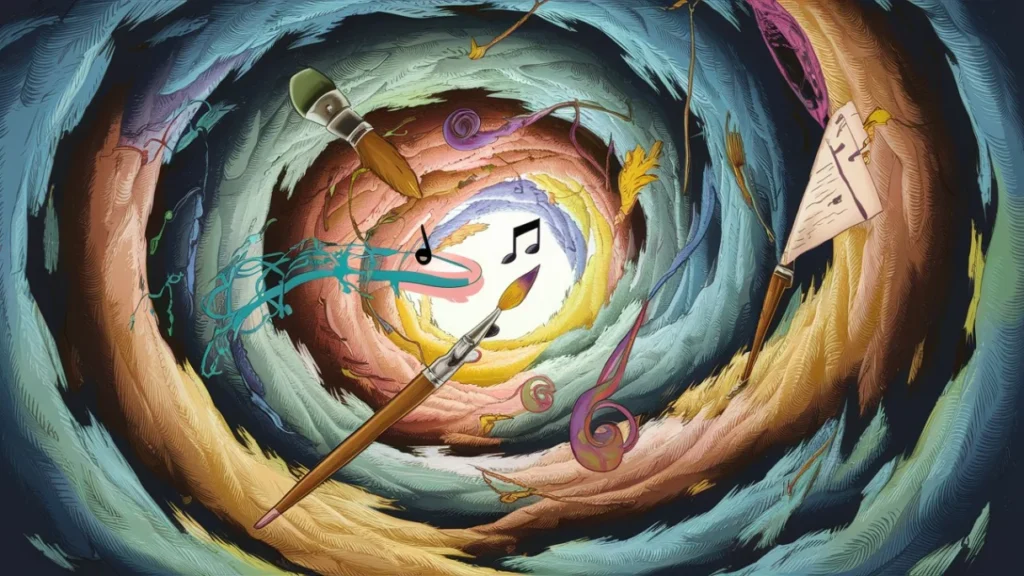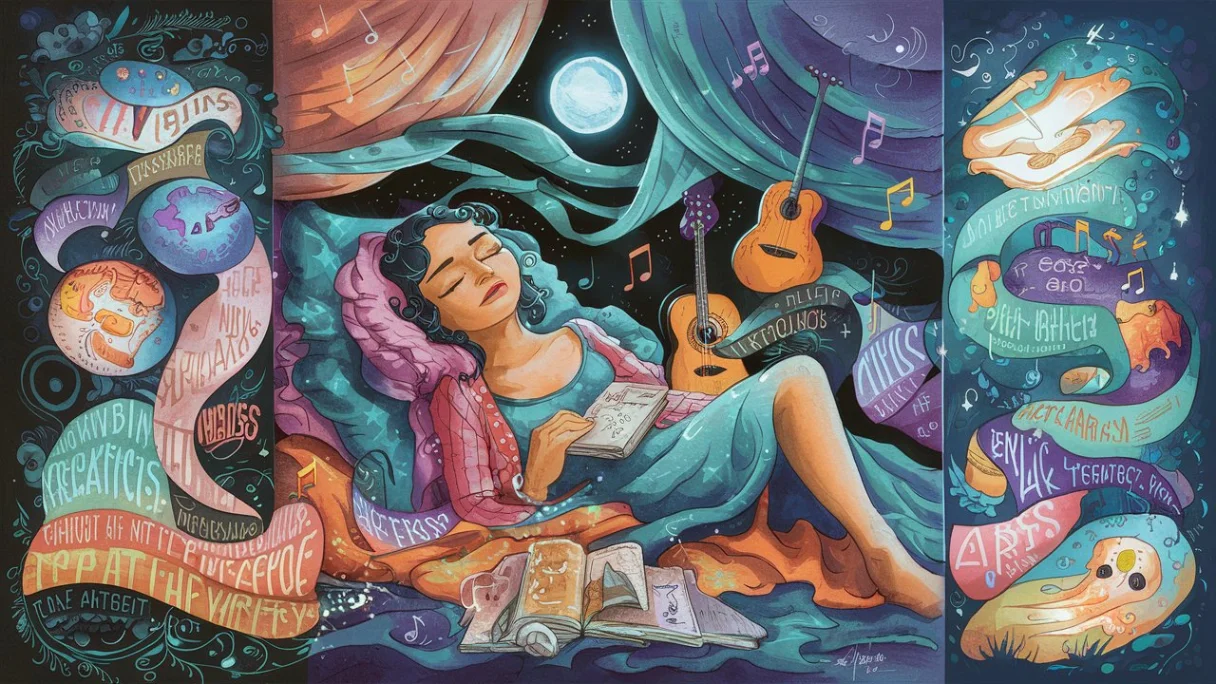Have you ever woken up from a vivid dream feeling inspired to create something extraordinary? Dreams have long been a source of inspiration for artists, musicians, and writers. In this blog post, we’ll explore the fascinating connection between dreams and creativity and how you can harness the power of your dreams to fuel your artistic endeavors.
The Link Between Dreams and Creativity
Dreams have a unique ability to tap into our subconscious minds, where our deepest thoughts, emotions, and desires reside. When we dream, our minds are free to explore ideas and concepts that we might not consider during our waking hours. This unrestricted exploration can lead to innovative and creative insights that can be applied to various forms of art.
Many famous artists, musicians, and writers have credited their dreams as the source of their most remarkable works. For example:
- Salvador Dali, the renowned surrealist painter, often used his dreams as inspiration for his bizarre and otherworldly paintings.
- Paul McCartney, the legendary Beatles musician, famously composed the melody for “Yesterday” in a dream.
- Mary Shelley, the author of “Frankenstein,” claimed that the idea for her novel came to her in a dream.
These examples demonstrate the powerful influence dreams can have on the creative process.
How Dreams Inspire Art

Visual artists can find a wealth of inspiration in their dreams. The surreal and often abstract nature of dreams can lead to unique and thought-provoking artwork. Here are some ways artists can use their dreams to inspire their work:
- Keep a dream journal: Upon waking, write down as many details as you can remember from your dreams. Describe the visuals, emotions, and any symbols that stood out to you.
- Sketch your dreams: Use your dream journal entries to create sketches of the scenes, characters, or objects that appeared in your dreams. These sketches can serve as the foundation for more elaborate artworks.
- Incorporate dream symbolism: Dreams often contain symbols that hold personal meaning. Consider how you can incorporate these symbols into your art to create deeper, more meaningful pieces.
- Experiment with surreal techniques: Dreams often defy the laws of reality, so don’t be afraid to experiment with surreal techniques in your art. Juxtapose unlikely elements, play with scale and perspective, and embrace the absurd.
By exploring the imagery and symbolism of your dreams, you can create art that is both personal and universally resonant.
Dreams as a Muse for Musicians

Dreams can also be a powerful source of inspiration for musicians. The emotional and sensory experiences we have in our dreams can translate into moving and evocative musical compositions. Here’s how musicians can use their dreams to inspire their work:
- Listen for melodies: Pay attention to any melodies or musical phrases that appear in your dreams. These can serve as the starting point for a new composition.
- Explore dream emotions: Dreams can evoke strong emotions, from joy and exhilaration to fear and sadness. Use these emotions to inform the mood and tone of your music.
- Translate dream visuals into sound: If your dreams contain vivid visual imagery, consider how you can translate those visuals into sound. What instruments, textures, and harmonies would best capture the essence of your dream?
- Collaborate with other artists: Share your dream-inspired ideas with other musicians or artists. Collaborating with others can help you expand on your initial concepts and create more comprehensive works.
By tapping into the emotional and sensory experiences of your dreams, you can create music that deeply resonates with your listeners.
Writing and the Dreamscape
For writers, dreams can be an endless source of inspiration for stories, poems, and even non-fiction works. The narratives and characters that appear in our dreams can serve as the foundation for compelling and imaginative written works. Here’s how writers can use their dreams to fuel their creativity:
- Record dream narratives: Keep a detailed record of the stories that unfold in your dreams. Pay attention to plot points, character interactions, and any surprising twists or turns.
- Develop dream characters: Dreams often introduce us to fascinating characters that can be developed into fully-realized protagonists or antagonists. Use your dream journal to explore these characters’ motivations, conflicts, and relationships.
- Use dreams as writing prompts: Select a particularly vivid or intriguing dream and use it as a writing prompt. Let your imagination run wild as you expand on the initial dream scenario.
- Explore dream themes: Dreams often contain themes that can be explored in greater depth through writing. Consider how you can use your dreams to examine universal human experiences such as love, loss, fear, or triumph.
By using your dreams as a starting point for your writing, you can create stories that are both deeply personal and universally resonant.
Tips for Enhancing Dream Recall and Inspiration

To make the most of your dreams as a source of creative inspiration, it’s important to develop good dream recall habits. Here are some tips to help you remember and work with your dreams more effectively:
- Keep a dream journal by your bed: Make sure you have a journal and pen easily accessible so you can record your dreams immediately upon waking.
- Set an intention to remember your dreams: Before going to sleep, tell yourself that you will remember your dreams when you wake up. This simple act of setting an intention can help improve your dream recall.
- Wake up naturally: Whenever possible, allow yourself to wake up naturally without an alarm. This can help you remember more details from your dreams.
- Meditate before sleep: Engaging in a relaxing meditation practice before bed can help calm your mind and promote more vivid and memorable dreams.
- Be consistent: The more consistently you work with your dreams, the easier it will become to remember and derive inspiration from them.
| Tips for Dream Recall | Benefits |
|---|---|
| Keep a dream journal | Improved dream recall and ability to track recurring themes and symbols |
| Set an intention | Increased likelihood of remembering dreams upon waking |
| Wake up naturally | More detailed and vivid dream recall |
| Meditate before sleep | Calmer mind and more memorable dreams |
| Be consistent | Stronger connection between waking life and dream life |
By incorporating these tips into your creative practice, you can develop a deeper relationship with your dreams and unlock a vast source of artistic inspiration.
Conclusion
Dreams have the power to inspire and inform our creative endeavors in profound ways. By tapping into the unique insights and experiences of our dream lives, we can create art, music, and writing that is both deeply personal and universally resonant.
Whether you’re a visual artist, musician, or writer, your dreams can serve as a powerful muse and guide on your creative journey. By keeping a dream journal, exploring dream symbolism and themes, and incorporating dream-inspired ideas into your work, you can unlock new levels of creativity and produce your most compelling and authentic creations yet.
So the next time you wake up from a particularly vivid or intriguing dream, don’t dismiss it as mere fantasy. Instead, embrace it as a gift from your subconscious mind and use it to fuel your creative fire. You may be surprised at the extraordinary works of art that result.

